Exploring George Barris’ 1963 Chevrolet Corvette “Asteroid”
When you think of George Barris, you are reminded of the many iconic cars that he designed and fabricated for television and the silver screen. Some of his most famous creations include the original Batmobile (1966-1968), the General Lee from “The Dukes of Hazzard” (1979), and KITT from “Knight Rider”(1982-1986). What you may not know is this – in addition to designing cars for Hollywood, George Barris also created one-of-a-kind custom hotrods, boulevard cruisers, and track-capable racers in his shop “Barris Kustoms.” While his creations varied from mild-to-wild, one of his most memorable “non-celebrity” automobiles is his 1963 Chevrolet Corvette “Asteroid.”
The “Asteroid” started life as a 1963 Chevy Corvette. It was ordered by mechanical engineer and renowned mid-century speed boat racer Bob Nordskog, sans any exterior paint save for a primer coat. Instead, the car was shipped directed to Barris Kustoms with instructions for Barris to transform the brand-new Corvette into a more radical version of itself.
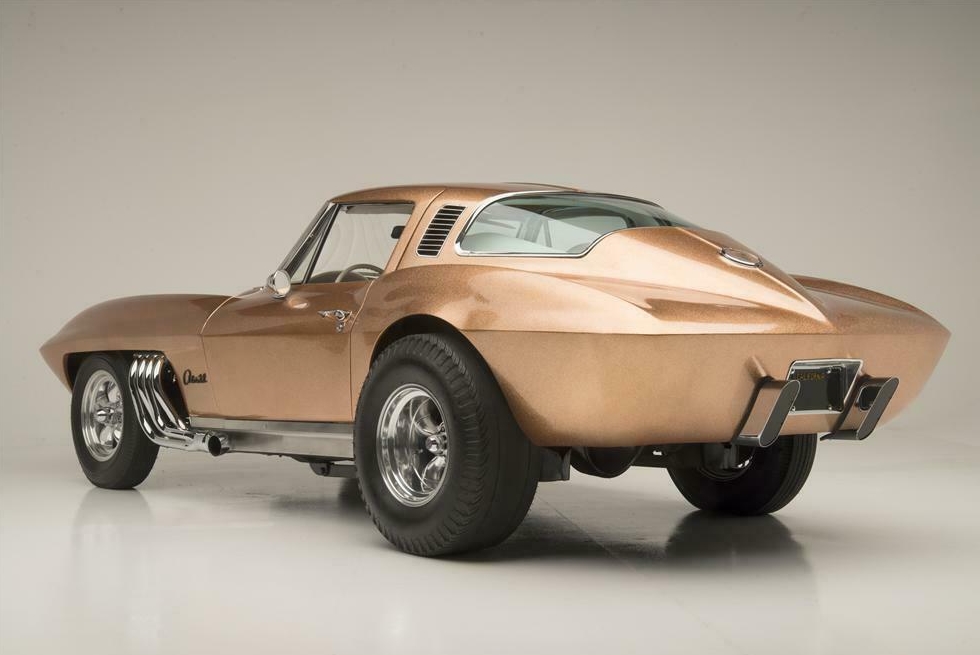
Given the newness of the second-generation Corvette (1963 was its inaugural model year), there were essentially ZERO fabricators who had ever tackled a project of this size/scope before. This didn’t stop Barris from taking on the project. With just 10 miles on its odometer at the time of its transformation, George Barris and his crew dissected the 1963 Corvette and began its metamorphosis from a wicked-looking production sports car into something far more extreme.
Barris created a custom body for the Corvette. It started with a modified-and-extended nose cone for the car that relocated the car’s headlights behind a custom, bladed grille. Unique headers, which exited behind the front wheels, were incorporated into the design, as was the replacement of the car’s factory split rear window. Massive header pipes extruded out thru the cut fenders behind the front wheels. The original headers were capable of being capped off for street driving or being opened up for track racing. The car’s wheel arches were also increased to accommodate larger wheels than the factory car offered.
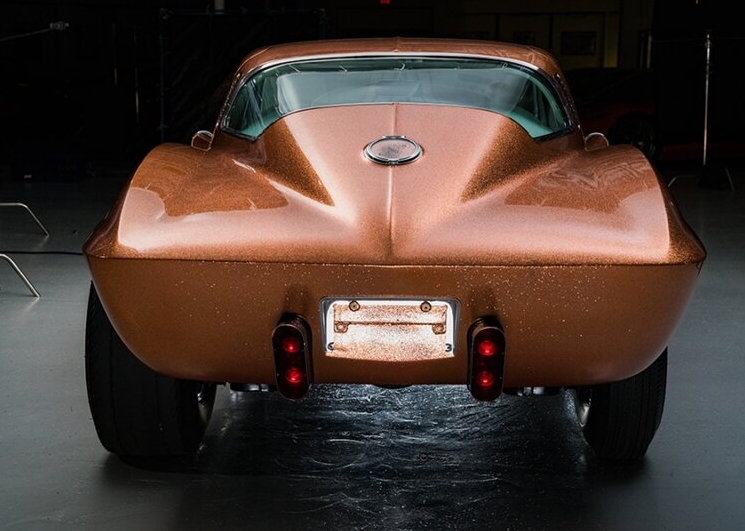
The rear tail panel was filled in while the rear wheel wells were opened up to accommodate bigger wheels on fatter tires. Barris had the entire exterior painted in a brilliant, solid copper color. It has since been suggested that the car’s rich color scheme, combined with its powerful powerplant and impressive capabilities helped the team come up with the car’s “Asteroid” name.
One of the more interesting “footnotes” surrounding the Asteroid is this – the car could be configured to perform on either the open road or the race track, making it one of the most diverse, and unique, automobiles of its era. The car rode on Dayton wire wheels when driven on the open road, and American Mags with race tries when competing at the track.
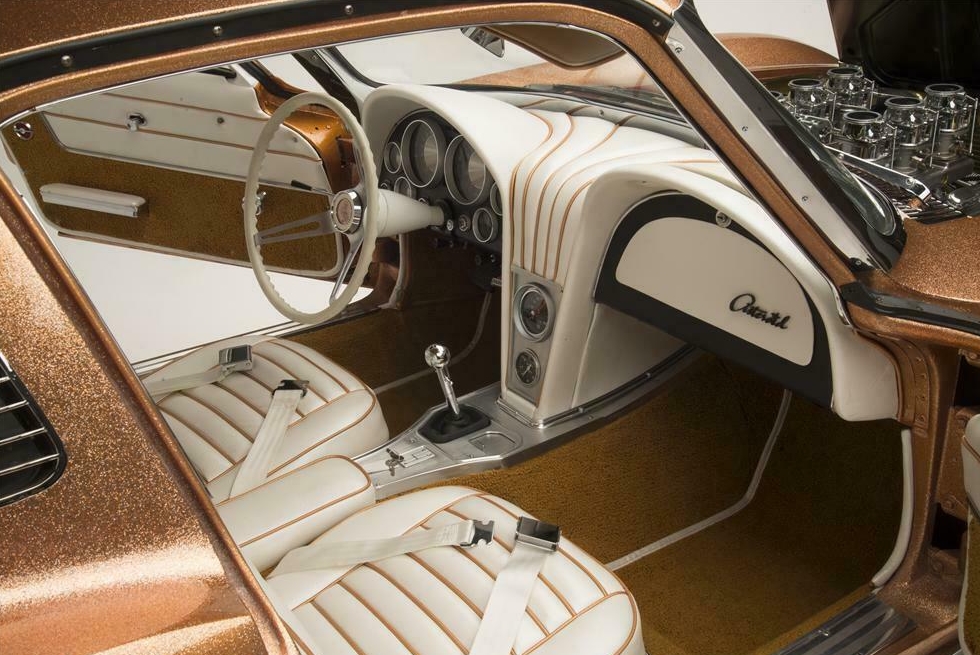
The Asteroid’s interior was designed by Nordskog’s brother-in-law Don Ferrara of San Pedro, California. Although its basic aesthetic was a reworking of the factory second-generation Corvette’s interior, the car featured pearl white seats, upper door panels, a padded dash panel, and a custom glovebox cover with the “Asteroid” name in black script. The white Naugahyde finish was complimented with cooper carpeting and accents which matched the car’s exterior paint.
The Corvette’s factory engine was replaced with a 352 cubic-inch engine built by Nordskog’s boat competition center. The engine ran at a 13:1 compression ratio and was fed through six, chrome, Stromburg 97 carburetors. The entire engine bay was finished in either chrome or gold paint, including the car’s fender wells, water pump (and other bolt-on units), and its firewall. The engine was paired to a rebuilt Muncie M-20 manual four-speed transmission with a stock shifter. The rear axle runs on 4.56 gears, coil springs and tube shocks.
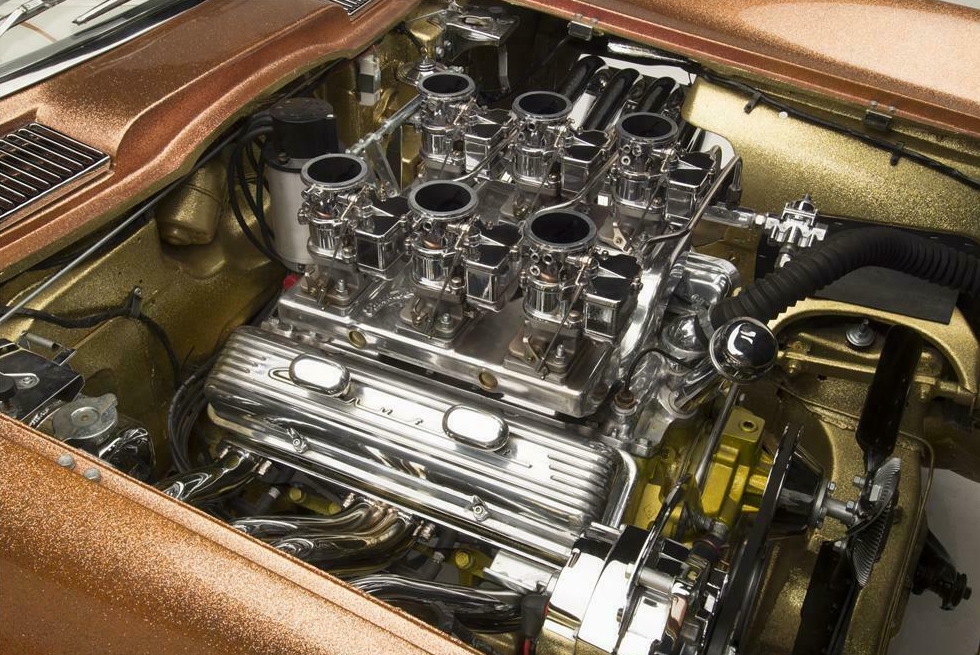
The car ran a 12.20-second quarter-mile at 118 miles per hour. While not unprecedented by today’s standards, a 12-second streetcar was a pretty-mean feat for a 1963 Corvette. Nordskog was known to drive the car to the track on its street tires, then switch the wheels over to the track mode with its American Racing mag wheels.
When first introduced, the Asteroid received a number of automotive awards, including top awards as a show car at the 1963 Long Beach Motorama and at the 1963 Mickey Thompson, Boat & Speed Show. It was also widely publicized in many of the top custom and hot rod magazines of its time.
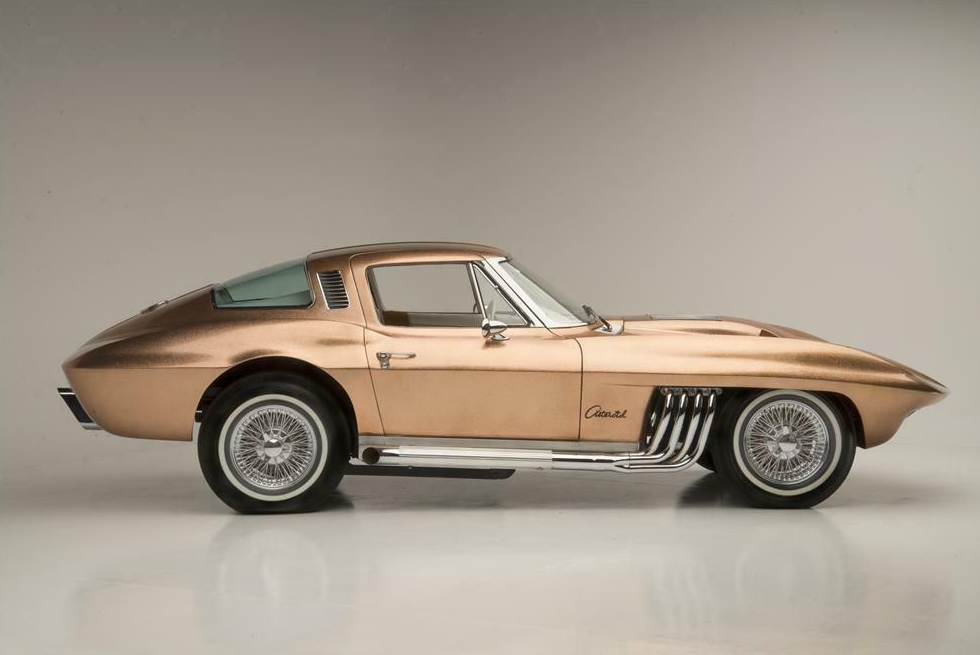
The car remained in Bob Nordskog’s possession until his passing in 1992. During that time, Nordskog made a number of appreciable modifications to the Corvette, transforming and re-transforming it time and again. The car was re-painted to match Nordskog’s fleet of racing boats, and it underwent other modifications which altered Barris’s original version of the car. After Nordskog’s passing, the family continued to own the car for several more years.
More recently, the car has undergone a vigorous and no-expense-spared restoration to return it to its original condition. The car now looks as it did when new. It will cross the Barrett-Jackson auction block in January 2022 as Lot #5024 in Scottsdale, Arizona. For information about the event, or to see the car’s official posting on the Barrett Jackson website, please click HERE.


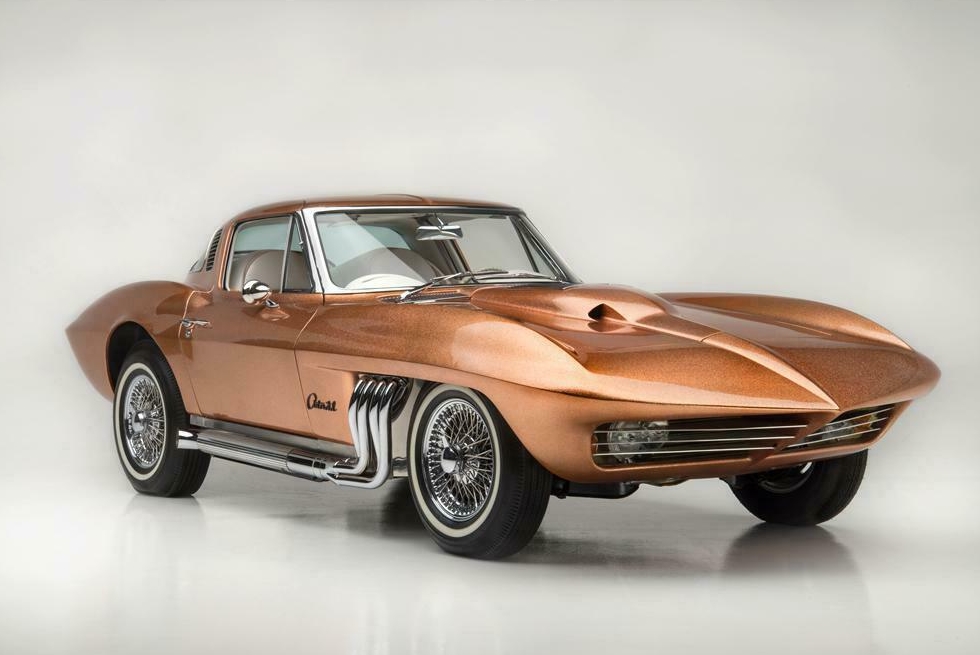

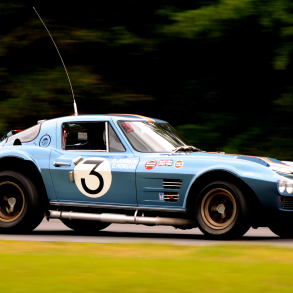
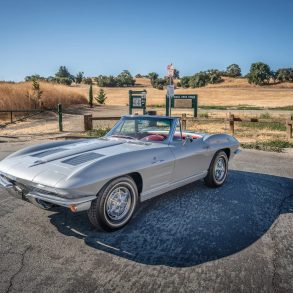
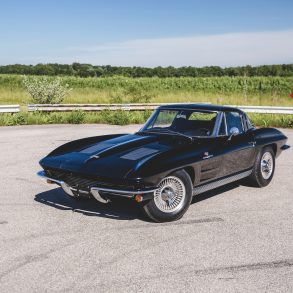

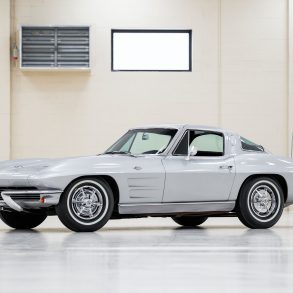
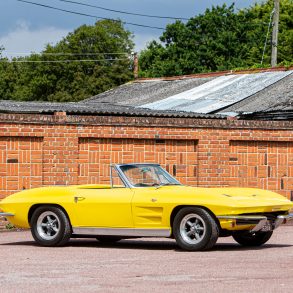
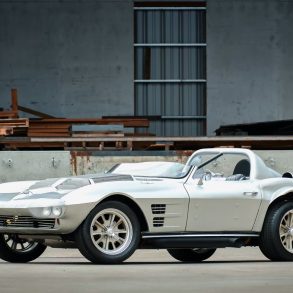

Uhhh… 63 Corvett coupes were all split window unlesshe was give an early 64
I was in Van Nuys while Bob was building a engine for my boat at Nordskog Competition and noticed the Vette sitting in a storage yard with a bunch of other cars and asked Bob about it and he told me that he wanted to buy the Mako Shark from Chevy but was turned down, so he had Barris build him one. He asked if I wanted to drive it and let me take it around the block. Loud as Hell and fun to drive, I’ll never forget it.